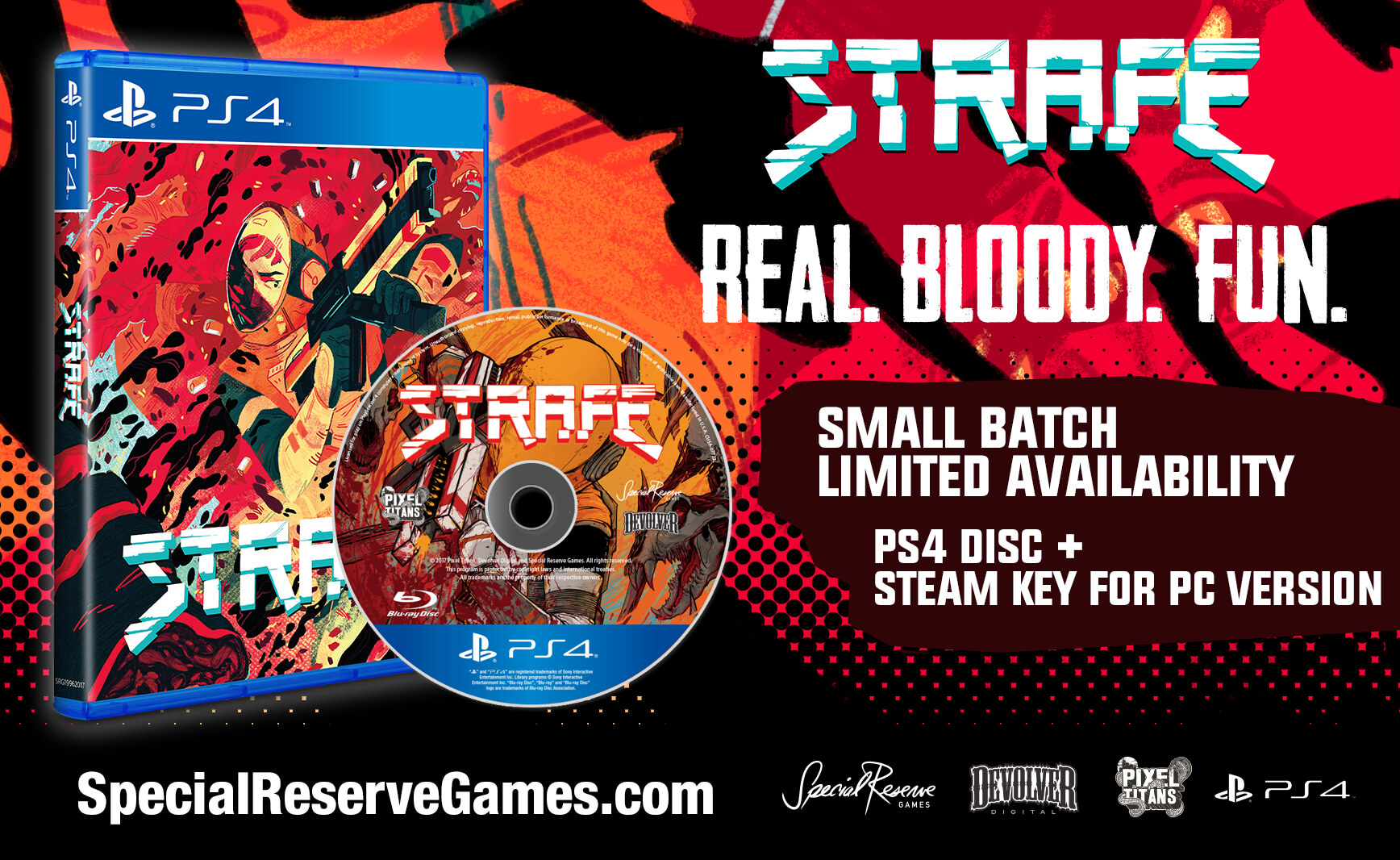

I helped it along by popping in Quake 2’s Rage, and I got that heavier tone of brutality Strafe wanted me to remember. If Strafe’s objective is indeed a look back at the FPS family of old, it does so more shallowly than it would’ve liked.
Strafe soundtrack code#
Strafe’s rooms are built by hand, but their cohesiveness is less a mark of inspired ingenuity and more pieces of code Lego-snapping everything from a randomized asset pool. But a large slice of the ‘90s shooter’s soul was the handcrafted maps that would architecturally make little sense but imprint upon a player’s mind like a second home with fond memories of where to get the shotgun or the hidden super health alcove. Functionally, they’re great murder boxes. The rooms and areas Pixel Titans has fashioned offer excellent spatial variety and verticality. The roguelike procedural generation further seemed at odds with classic shooters’ meticulous map layouts and item placements. Other nostalgia-centric games such as Shovel Knight and Spelunky lingered in the community’s eye not for their precise mimicry but for their elaboration. It covers guns, shooting, enemies, movement, and a conclusionary boss fight, but that’s it-I may as well have fished out my Final Doom CD for the same retro timewarp. Strafe struggles to climb above its foundation. It feels as if Pixel Titans expended most of its effort crafting a believable simulacrum but lost steam past that. And it’s hard for Strafe’s other aspects to pull away from that ‘remember-when’ approach. There’s no question, then, that Strafe is a game about the memory of a game made in the 1990s. But the spectacle eventually wore off-Gallagher only smashed so many watermelons-so I drew larger value from the lingering stains acting as a gruesome breadcrumb trail showing where I had yet to explore. It’ll elicit silly giggles and pauses to mentally snapshot the sheer ridiculousness of 10-second long crimson fountains. The 1996-ification of Strafe’s violence shows best in its copious bloodshed, the heavily marketed “uber-gore,” chunks of viscera dousing walls and floors with organ juice. I vastly preferred and enjoyed the various pickup weapons-pulse guns, SMGs, disc launchers, and others-scattered throughout each floor, once again a call-back to the old days of amassing an arsenal and flick-swapping with the mousewheel.

I had to leave the assault rifle behind after a few runs-I liked the small touch of its barrel smoke effect, but its bullets and increasing spread felt weak compared to its brothers. I leaned on the railgun’s headshot magic for clearing rooms from a distance, but I could barely hear the zap above the ambient din.

The shotgun, dutifully saluting its FPS role as a close-range cleaver, sounded like a popping balloon. My silent companion-one of three primary guns, a shotgun, an assault rifle, or a railgun-packed plenty of kinetic punch, but I wished each would scream instead of whimper. I savored the rising panic of surviving for just a few more seconds to sprint into the exit door or to grab a critical keycard, and the clang of a new monster closet opening up somewhere left swivel tracks on my mousepad. Every digit of shields or health I lost crept me closer to permadeath, an interesting distillation of traditional roguelike decision-making into the FPS’s raw input dexterity. Strafe’s procedural generation carpets each room with enemies or stuffs them behind sliding wall panels and crumbling rock faces. I loved the efficacy of Strafe’s low-poly look plucking at old memories-like marveling at the first glimpse of accelerated graphics-and it showed in the sparking bulbs, blocky geometry, and dynamic lava glows peppering each map. Developer Pixel Titans punched the time machine back to 1996 and broke off the abort lever. Strafe nails its chosen genre’s fascination with death, packaging a single-life slaying spree with deliberate visual anachronisms and a speed matching id’s formative titans. Video director Thom Glunt and programmer Stephen Raney’s background in commercial and music video production lends an eye for finer details on presentation. As both, it hooked me into sinking over 10 hours into it, but as we parted ways, I felt I’d retread too-familiar ground. As a roguelike, it’s that one cabinet shoved shrine-like into the arcade’s darkest corner and reverently avoided for its quarter-gobbling reputation. As a shooter, it’s the personified desire to convince Mom to buy a Voodoo2 card. Strafe proudly wears its influence on its sleeve-and its other sleeve, and its pant leg, and both jacket pockets.


 0 kommentar(er)
0 kommentar(er)
